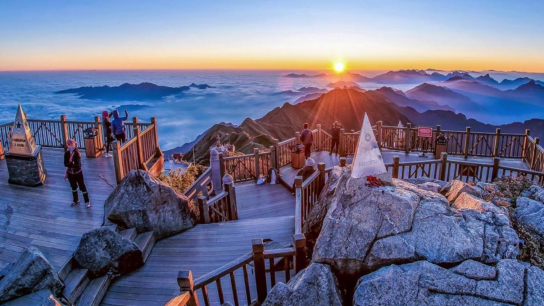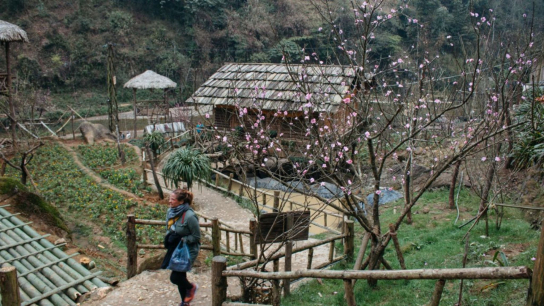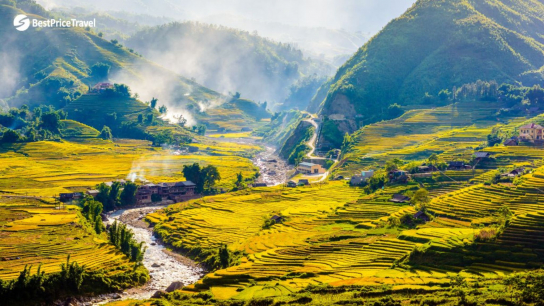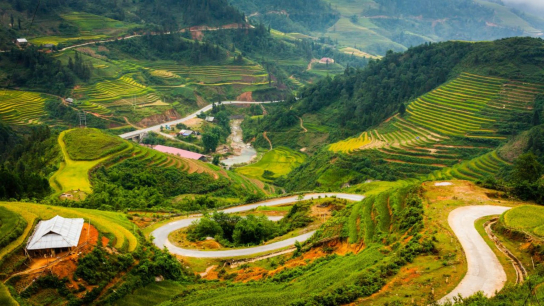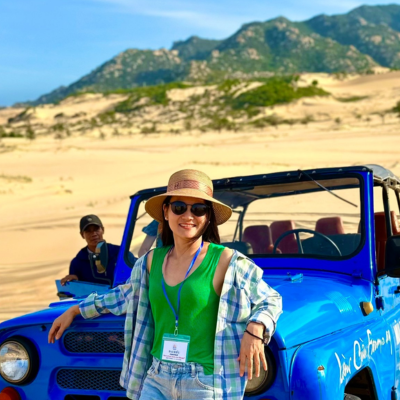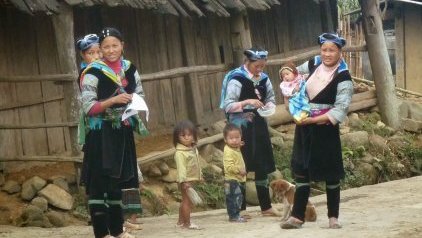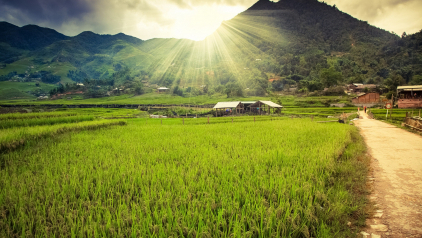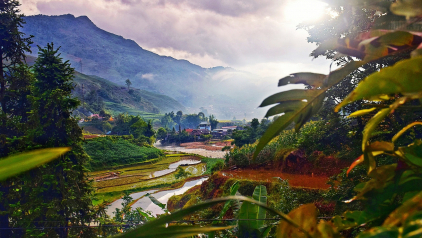Top 6 Adventure Things To Do in Sapa
Sapa is perfect for outdoor activities but also for exploring some of the most unique and fascinating hill tribe villages in the region. Whether you travel to Sapa in the spring, summer, fall or winter, it is simple to find endless Sapa vacation ideas for any season. Here’re top Sapa things to do:
1. Trekking/Hiking to Village in Sapa
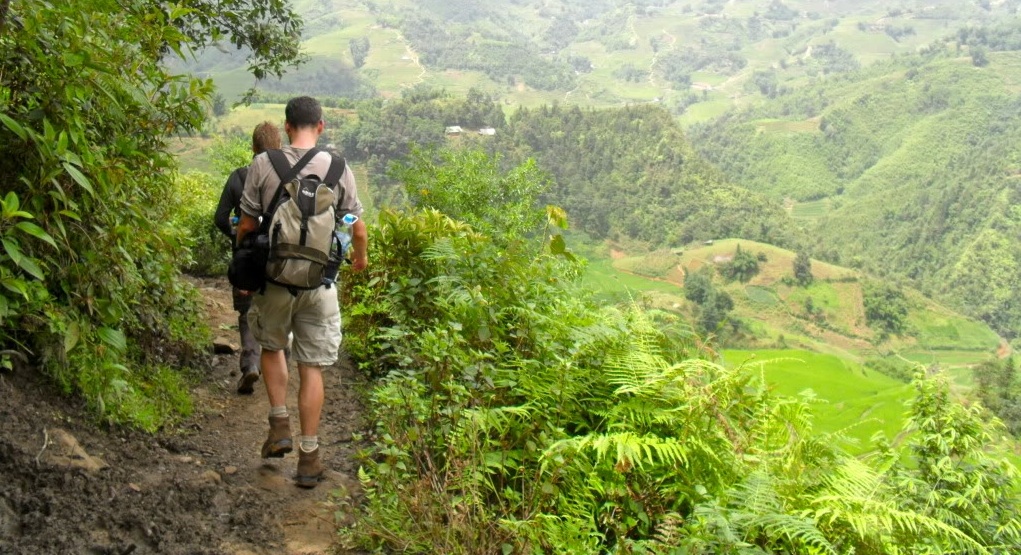
Trekking in Sapa is one of the best ways to experience the natural scenery of Northern Vietnam
If you are travelling all the way up to Sapa, you are likely thinking of going trekking. This is, after all, one of the most scenic regions of Northern Vietnam, and if there is one thing the frontier town of Sapa is famous for, it is rice terraces with sweeping mountain vistas. Sapa offers a wide range of trekking spots from easy to hard level. Tourists can choose the most suitable route depending on their skills and abilities. Tourists may spend a few hours walking to Ham Rong (Dragon Jaw) Mountain, wandering through tribal villages along the mountain sides such as Cat Cat or Lao Chai, Ta Van Village to Muong Hoa Valley, trekking to the Ta Phin Village, Bac (Silver) Waterfall or three days conquering Fansipan. On the way, you will see H’Mong and Dao villages where you can feel the hospitality of local ethnic people and discover many interesting facts about their ordinary life as well as culture and architecture.
2. Climbing to Fansipan Moutain in Sapa
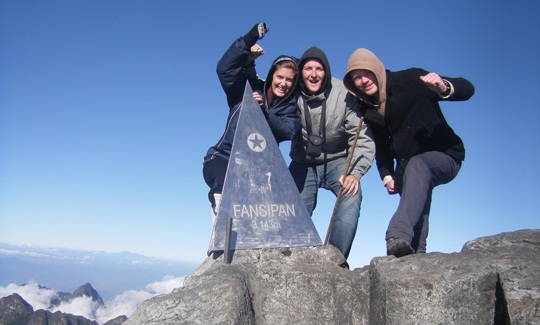
Conquer Mount Fansipan
Many adventurous travelers to Vietnam dream of conquer Mount Fansipan which is called “the Roof of Indochina” with the height of 3143m. This place is a good choice for those who are eager to conquer high peaks and test their muscular power. Tourists who are fit and have mountain climbing experience will enjoy this attraction the most, as the peak is accessible all year round. It is definitely not an easy trek but it promises marvelous views of the Hoang Lien mountain range and pristine natural beauty. Climbers have chance to explore the diverse flora, enjoy beautiful orchids and wild flowers along the way. What a great experience! Technical climbing skills are not necessary, but endurance is a must. There are three popular routes to Fansipan, with the starting point is Tram Ton pass, Cat Cat ethnic village or Sin Chai. Sin Chai route is said to be the most beautiful but the most dangerous also. Almost all tourists choose the starting point at Tram Ton pass as it is the easiest way. It often takes two or three days to fulfill a conquest of Fansipan. If you decide to make the trip, be sure to book with an experienced local operator.
3. Biking to village in Sapa
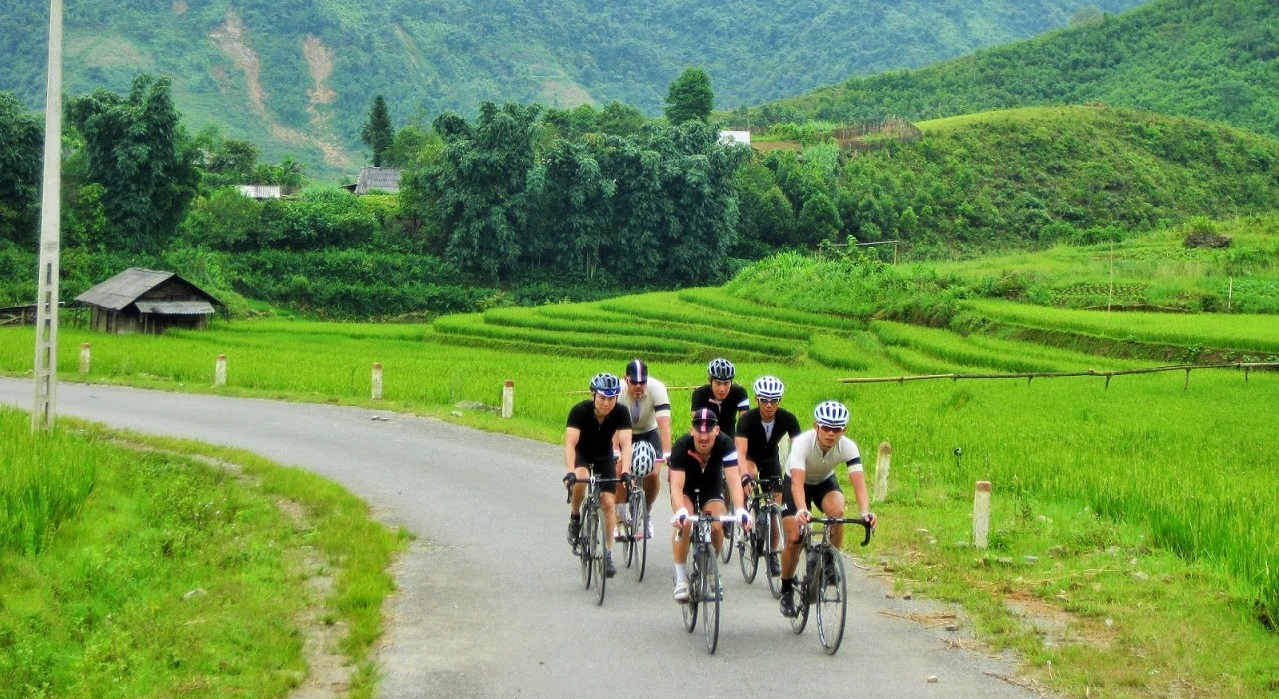
Cycling in Sapa
If long treks and climbing is not really your thing, cycling to markets and villages is a good choice for those who want to experience Sapa in a new creative way. Renting a mountain bike gives you the option to venture out a bit further from Sapa town. In combination with sightseeing, mountain biking also gives you health benefits and brings you wonderful experiences. Cycling in mountainous terrain is suitable for people with generally good health and skilled cyclists. Sapa is a great place for exploring on two wheels, but be warned, the roads and paths are pretty steep. To enjoy your adventurous biking tour, you should travel with an experienced tour guide and always follow the mountain biking safety tips.
4. Try Sapa Home-stay
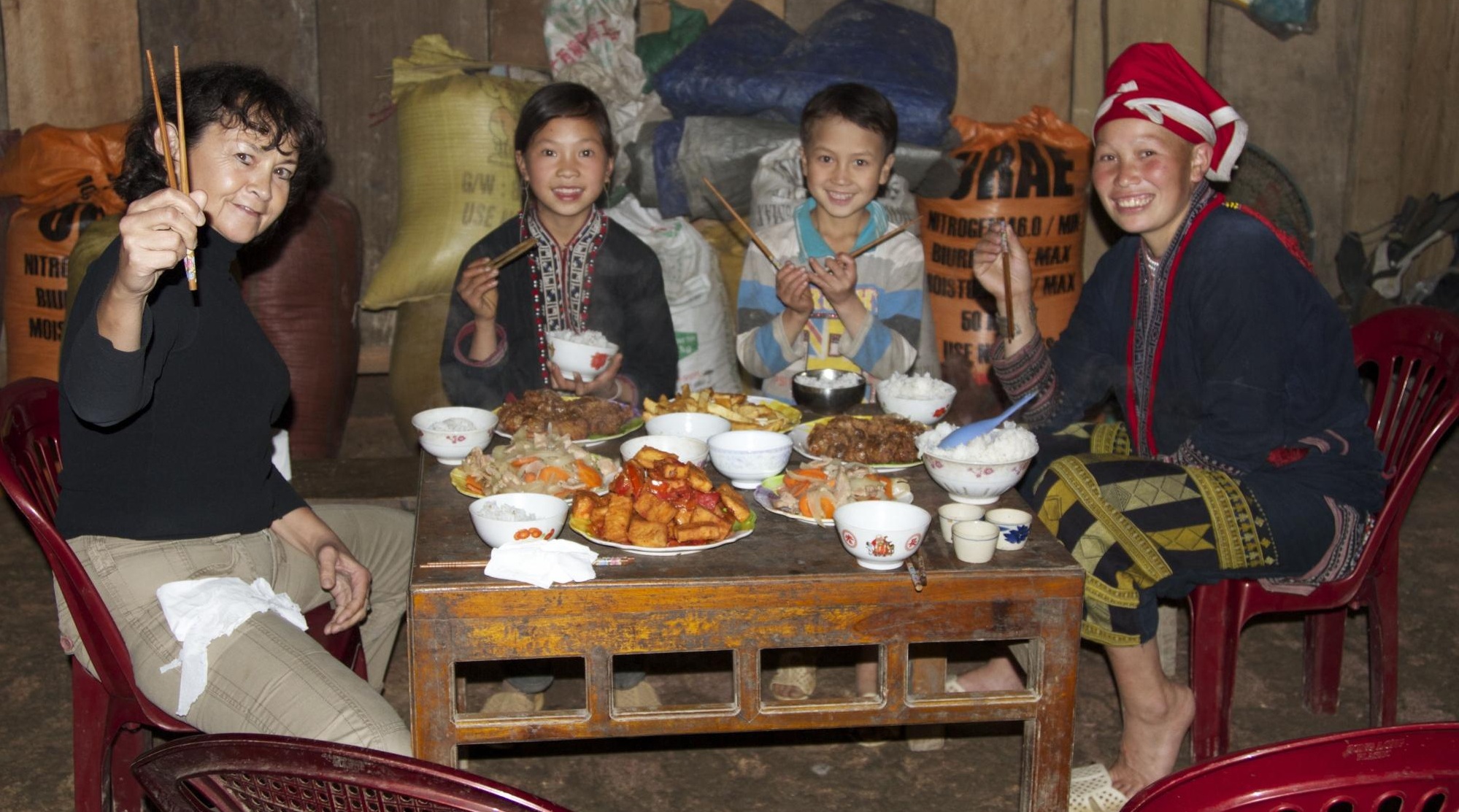
Having meals with local family
A two or three day trekking incorporating homestays in the villages is an enjoyable experience in Sapa. From the popular Lao Chai and Ta Van homestays to the quiet and remote village of Lao Chai San, each homestay has a different feel, but all offer the traveler a rare glimpse into the way of life that has all but vanished from the rest of Asia. The government is very strict about tourists wandering around on their own so you need to register with a local travel operator who will obtain the necessary permits and assign a guide to take you from one village to another. Do not expect amenities like hot water, heater or modern toilet, all you will get is a thin mattress to sleep on and a mosquito net. At cold nights, your only comfort will be a thick blanket.
Let's try our homestay tours.
5. Relax with traditional medicinal herb bath of Red Dao ethnic minority
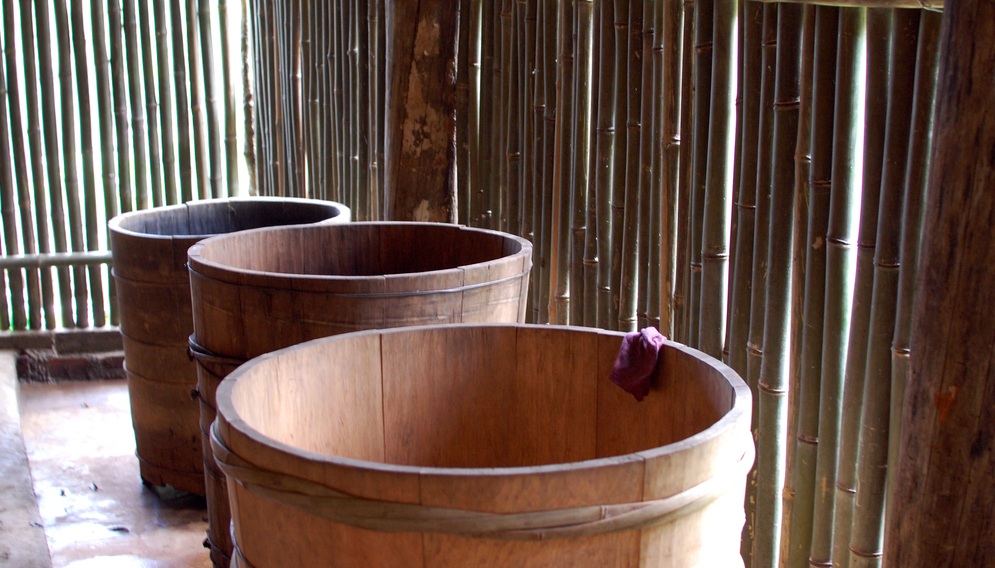
Traditional Wooden Tub
The Red Dao people in Sapa have been famous for their secret herbal bath therapy. After long days of sleeping on the train and bus, trekking through forests and mountains, you can totally relax and enjoy soaking in the herbal bath. Medicinal herbs that can only be found in mountainous areas are carefully selected, mixed in unique way for specific kind of illness, typically about 12-14 herbs for each remedy and then boiled in 3 or 4 hours to extract essence. Herbal bath will help reducing stress, tiredness, bringing peace of mind, releasing muscles, and totally relaxing all over the body.
6. Camping

Camping site
Hikers and adventurers will never be disappointed when choosing Sapa trekking tours. As a trekking tour usually takes 3 to 4 days or more, it is harder day after day, sometimes one has to crawl up the steps, climbing through the hills and mountains. Far more fun, however, is to leave the town and visit the ethnic people in their tribes, trekking through the rice terraces with the opportunity to spend a night at a home-stay. Evening time is ideal for camping in the mountains, burn a fire and play, listen to music of ethnic groups. When tired, they stay in sleeping bag to keep warm, convenience and keeps insects away. The homestay is definitely not for the traveler who cannot live without their modern conveniences but it offers an excellent opportunity for those who want to experience a gentler way of life.
On the whole, it is not so hard to explain why tourists fall in love with Sapa once stepping on here. It’s easier said than done. Why don’t you start your own journey to Sapa to understand how much love we give for this amazing land?
Xuyen
Image Sources: Internet
